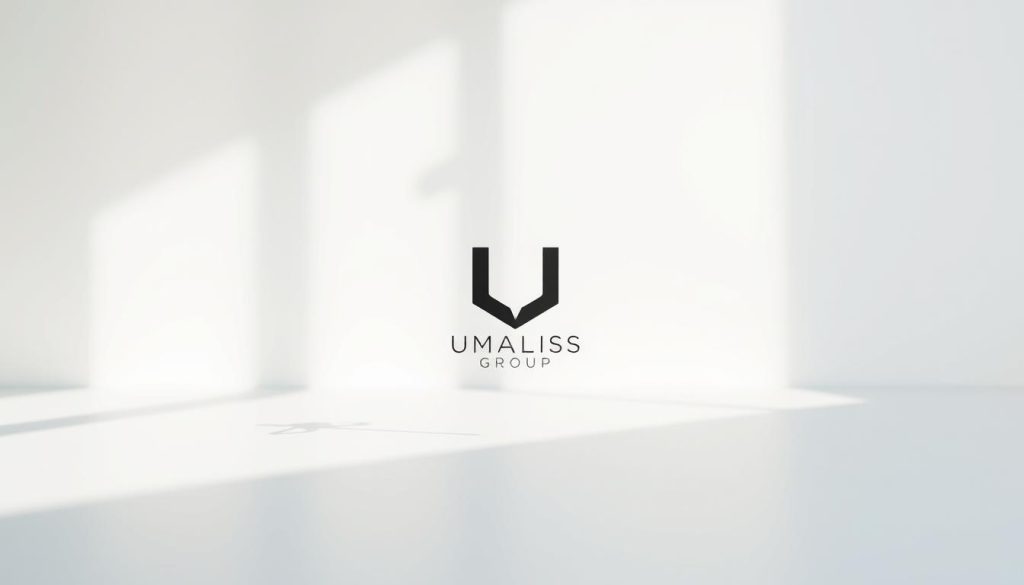Nearly half of today’s global workforce (46.7%) now operates independently, transforming professional identity creation from an optional strategy to a career-defining requirement. In this crowded landscape, standing out requires more than technical skills – it demands a deliberate approach to how you communicate expertise and values.
Effective career growth hinges on crafting an authentic reputation that positions you as an industry authority. This means consistently demonstrating specialized knowledge while aligning your unique professional signature with market needs. Those who master this balance achieve greater visibility and command premium rates.
Our guide explores proven methods for building a professional identity that resonates with ideal clients. You’ll discover how strategic positioning and value-focused communication create lasting impressions in digital spaces where first encounters often determine success.
Table of Contents
Key Takeaways
- Nearly half of global professionals now work independently, intensifying competition
- Authentic reputation-building separates top performers from average providers
- Strategic positioning directly impacts earning potential and project quality
- Consistent value demonstration establishes industry authority over time
- Digital-first interactions require polished, purpose-driven self-presentation
Understanding the Power of a Strong Personal Brand
In today’s competitive freelance market, your identity shapes every client interaction. A strong personal brand acts as your professional fingerprint – instantly recognizable and impossible to replicate. It transforms vague perceptions into concrete reasons clients choose you over others.
Your Identity as Your Business Foundation
What you deliver matters, but how you deliver it creates lasting impressions. Technical abilities form just 40% of client decisions – your communication style, problem-solving methods, and unique approach to challenges complete the picture. These elements combine to create what industry leaders call your professional signature.
Consistency in this signature builds recognition. When clients encounter the same value-driven experience across projects, they begin associating specific qualities with your work. This recognition becomes your reputation – the invisible currency that attracts premium opportunities.
Cultivating Client Confidence Through Actions
Trust forms faster when your brand aligns with reality. A 2023 client survey revealed 68% of hiring managers prioritize authenticity over polished perfection. They want proof you’ll deliver promised results, not just clever marketing.
Three elements cement credibility:
- Transparent communication about capabilities
- Case studies demonstrating measurable impact
- Consistent quality across all deliverables
These practices transform one-time projects into long-term partnerships. Clients return when they recognize both your expertise and the reliability your brand represents.
Personal Branding for Freelancers: Definition and Core Elements

The modern professional landscape rewards those who can articulate their distinct value proposition with clarity and conviction. At its essence, this strategic positioning combines three pillars: your operational philosophy, technical capabilities, and the memorable way you deliver results.
What Sets Your Professional Identity Apart
True differentiation emerges where specialized expertise meets unconventional problem-solving. While others list generic skills, your brand identity shines through specific methodologies developed from hands-on experience. Consider these markers of distinction:
- Proprietary frameworks refined through client projects
- Niche knowledge addressing underserved market needs
- Consistent results documented through measurable outcomes
Key Elements: Values, Skills, and Storytelling
Core principles act as your compass, guiding which projects to accept and how to execute them. When aligned with technical abilities, they create authentic client connections. A 2022 LinkedIn study revealed professionals who articulate their values see 37% more inbound opportunities.
Storytelling transforms service lists into relatable journeys. Instead of stating « I design websites, » share how your coding skills rescued a client’s failing e-commerce platform. This approach makes abstract skills tangible while demonstrating real-world impact.
The most effective narratives balance professional achievements with human elements. They answer two critical questions: What specific problems do you solve better than others? Why should clients trust you to deliver exceptional results?
Crafting a Compelling Brand Identity and Narrative

What makes clients choose you repeatedly in a saturated market? The answer lies in strategic differentiation through brand identity development. This process transforms abstract skills into memorable client experiences that drive business growth.
Developing a Unique Value Proposition
Your competitive edge starts with this critical question: What specific outcomes do you deliver that others can’t replicate? Effective value propositions combine three elements:
| Element | Generic Approach | Specialized Strategy |
|---|---|---|
| Core Focus | Service descriptions | Measurable client outcomes |
| Client Perception | Replaceable vendor | Essential partner |
| Revenue Impact | Price competition | Premium positioning |
Consider this example: « I don’t just design websites – I create conversion-focused digital storefronts that increase e-commerce sales by 35% average within 90 days. » This statement immediately communicates specific expertise and tangible results.
Aligning Your Visuals and Messaging
Consistent branding acts as your silent salesforce. Research shows cohesive visual systems:
- Boost content recognition by 80%
- Reduce client decision-making time
- Increase proposal acceptance rates
Implement these alignment techniques:
- Use signature colors across proposals and social media
- Maintain uniform typography in all communications
- Develop photo guidelines for portfolio consistency
When visuals and verbal elements work in harmony, they create a professional signature that clients remember. This alignment proves particularly effective for target audience engagement, with 72% of buyers reporting they pay premium prices for visually cohesive services.
Establishing Your Online Presence and Content Strategy
Four out of five decision-makers research professionals online before hiring. Your digital footprint now acts as a 24/7 portfolio – accessible to clients across time zones. Crafting this online presence requires strategic planning across multiple platforms to showcase expertise effectively.
Optimizing Your Website and Social Media Profiles
Your website serves as mission control for your digital ecosystem. Follow these optimization essentials:
| Platform | Key Feature | Impact |
|---|---|---|
| Website | SEO-optimized service pages | 47% higher conversion rates |
| Skills endorsement section | 33% more profile views | |
| Twitter/X | Pinned work samples | 28% faster client replies |
Social media profiles should mirror your website’s visual identity. Use matching color schemes and professional headshots across platforms. This consistency helps audiences recognize your brand instantly.
Creating High-Quality, Engaging Content
Valuable content drives 73% of initial client inquiries according to recent marketing studies. Focus on formats that address specific challenges:
- Case study breakdowns showing problem-solving processes
- Short video tutorials demonstrating niche skills
- Industry trend analyses with actionable insights
Maintain a regular publishing schedule across your blog and preferred social channels. This consistency keeps your expertise visible while building audience trust through reliable information sharing.
Networking, Client Relationships, and Reputation Management
Six out of ten projects come through trusted connections rather than job boards. This reality makes strategic relationship-building your most valuable career accelerator. Reputation management becomes your silent partner in this process, shaping how peers and clients perceive your professional capabilities.
Leveraging Testimonials and Case Studies
Client feedback acts as your credibility currency. A well-placed testimonial can shorten decision-making time by 40% according to recent marketing research. Effective social proof requires more than collecting random compliments – it demands strategic curation.
Three elements make testimonials impactful:
- Specific outcomes achieved through your work
- Verifiable client names/companies (with permission)
- Relevance to your target service offerings
Case studies work best when showcasing problem-solving journeys. Structure them to highlight challenges faced, your unique approach, and measurable results. This format helps potential clients visualize working with you.
Building a Robust Professional Network
Quality connections outperform quantity every time. Focus on cultivating relationships with:
| Connection Type | Value Offered | Frequency |
|---|---|---|
| Industry Peers | Knowledge sharing | Monthly check-ins |
| Past Clients | Repeat business | Quarterly updates |
| Complementary Pros | Referral opportunities | Bi-monthly collaboration |
Allocate time weekly to nurture these relationships. Share valuable resources, celebrate others’ successes, and maintain genuine engagement. This consistent effort builds trust that converts connections into career opportunities.
Remember: Your network grows strongest when you focus on mutual benefit rather than immediate gains. The most successful professionals create value for others first, knowing opportunities follow naturally.
Practical Steps to Build and Evolve Your Personal Brand
How do top professionals transform their expertise into lasting market presence? The answer lies in a structured process that combines self-analysis with strategic execution. This journey requires equal parts introspection and market alignment.
Self-Discovery and Niche Definition
Begin with exercises that reveal your core value. Map your unique combination of skills, professional experiences, and problem-solving approaches. Research shows specialists earn 28% more than generalists – making niche focus essential for premium positioning.
Ask critical questions:
- Which challenges do I solve exceptionally well?
- What knowledge gaps exist in my industry?
- Which client types energize my work?
This analysis helps craft services that resonate with your target audience. Narrowing your focus increases visibility while reducing competition.
Maintaining Consistency and Adapting Over Time
Regular audits ensure your messaging stays aligned with evolving goals. Update platforms quarterly to reflect new capabilities while preserving recognizable brand elements. Studies indicate consistent presentation boosts client recall by 73%.
Balance stability with flexibility:
- Preserve core visual identity elements
- Refresh content formats annually
- Incorporate client feedback loops
This approach ensures your professional identity remains relevant while building long-term success through trusted relationships.
FAQ
Why is a strong personal brand critical for freelance success?
A well-defined brand establishes trust, differentiates you from competitors, and attracts clients who align with your expertise. It positions you as a specialist rather than a generalist, increasing perceived value and long-term opportunities.
How do I define my unique value proposition as a freelancer?
Start by identifying your core skills, industry-specific knowledge, and the tangible results you deliver. Combine these with your professional values and client communication style to create a clear, concise statement that addresses your audience’s needs.
What platforms are most effective for building an online presence?
Focus on platforms where your target audience spends time. LinkedIn works well for B2B services, while Instagram or Behance suit creative fields. A professional website remains essential—it’s your centralized portfolio and credibility anchor.
How can testimonials strengthen my freelance reputation?
Client feedback serves as social proof, validating your expertise. Showcase detailed case studies that highlight problem-solving processes and measurable outcomes. This builds confidence in your ability to deliver results.
Should my personal brand evolve as my freelance business grows?
Yes. Regularly reassess your niche, services, and messaging to reflect new skills or market shifts. Consistency in core values matters, but adaptability ensures relevance. Update visuals and content strategies to mirror your professional maturity.
How do I handle negative feedback without damaging my brand?
Address criticism professionally and promptly. Use it to demonstrate accountability and problem-solving skills. Publicly acknowledge the issue, then resolve it privately. Most clients appreciate transparency, which can enhance trust when handled well.





